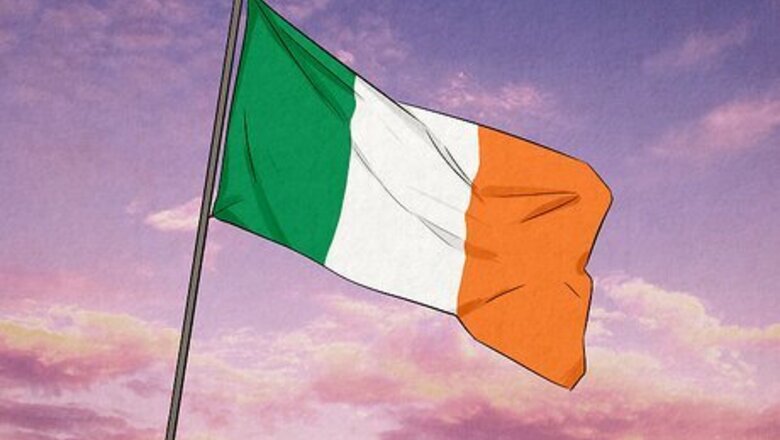
views
The Flag of Ireland
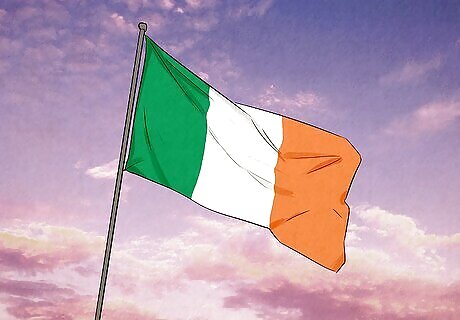
The Irish tricolor is the most recognizable green, white, and orange flag. The flag features vertical, equal-sized stripes of green on the left (hoist side), white in the middle, and orange on the right. The green stripe symbolizes Irish nationalism, the greenery of the Emerald Isle, and the country’s Catholic majority, while the orange stripe symbolizes Ireland’s Protestant minority and the Orange Order (an international Protestant fraternal order based in Northern Ireland). The white strip in the middle represents lasting peace between them. The official proportions of the flag are 1:2, meaning the width is twice the height.
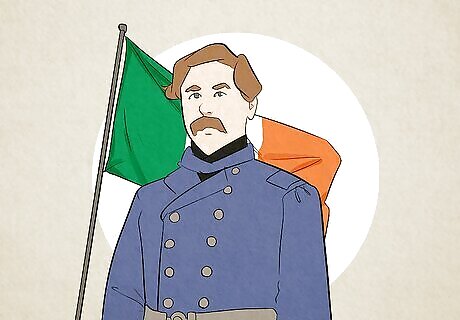
The Irish tricolor was first flown on March 7, 1848. The flag was partly inspired by the French tricolor flag, which was adopted during the French Revolution at the end of the 18th century. Thomas Francis Meagher, a leader of the Young Irelanders (a liberation movement against British control of Ireland), traveled to France in 1848 to congratulate rebels there on overthrowing King Louis Philippe I and was gifted an Irish tricolor made of French silk. He brought it back, and it slowly became a symbol for Ireland. By 1917, the Irish tricolor had gained widespread popularity. It was used as a symbol of Ireland during the 1916 Easter Rising (a week-long Irish rebellion against British rule in Dublin). It was officially adopted as the flag of Ireland on December 29, 1937, and remained the official flag when Ireland separated from the British Commonwealth in 1949.
The Flag of India
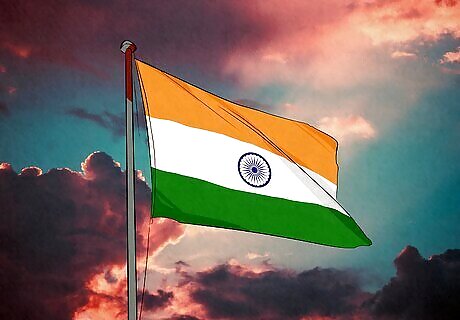
The Indian flag is a horizontal tricolor with a blue Dharma Chakra in the center. The orange (saffron) stripe at the top of the flag symbolizes courage and sacrifice, the white stripe in the center represents peace and truth, and the bottom green stripe symbolizes faith, chivalry, and the fertility of the land. The deep blue Dharma Chakra (a 24-spoke wheel) is associated with the 3rd-century BCE emperor Ashoka and comes from the ancient Mauryan Empire, when India was united under a single administration for the first time. The flag has a length-to-width ratio of 3:2, meaning the length is 1.5 times longer than the height.
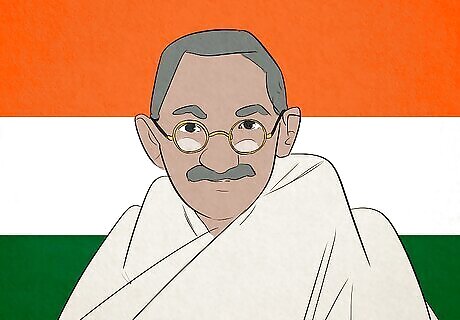
The modern Indian flag was officially adopted on July 22, 1947. Similar designs had been in use since 1921, when a red and green striped flag was presented to Mahatma Gandhi and the Indian National Congress party (the red originally symbolized Hinduism and the green was for Islam, the two major religions in India). A charkha (spinning wheel) symbol was added to the center, representing Gandhi’s mission to make Indians self-sufficient by making their own clothing. Gandhi added the white stripe in the center to make the charkha more visible, and the flag was carried by thousands during peaceful protests in 1923. Later, the red stripe was changed to saffron orange, and the religious symbolism of the stripes was let go to avoid sectarian divisions.
The Flag of Niger
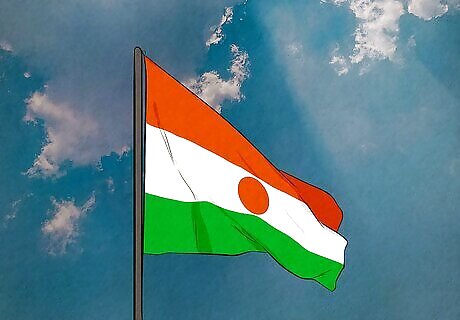
The flag of Niger is a horizontal tricolor with an orange dot in the center. Like the Indian flag, the top stripe is orange, the middle is white, and the bottom is green. The orange stripe symbolizes the north and east of Niger, dominated by the Sahara Desert. The white stands for purity, innocence, and civic responsibility, and the green stripe represents the southwest of the country and the fertile land along the Niger River, a symbol of agriculture and hope. The orange dot in the center of the flag represents the sun and the spirit of the Nigerien people. It also helps to differentiate the flag from India’s. The official proportions are 6:7, meaning the flag is 6 units tall and 7 units long.
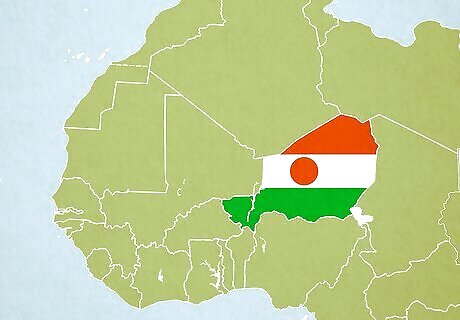
Niger’s current flag was adopted on November 23, 1959. When Niger first declared independence from France in 1958, the French tricolor was still the only flag that represented the country. The modern flag was designed and approved in November 1959 and continued to represent the nation after independence was fully achieved in August 1960. The flag doesn’t include a traditional pan-African color scheme (often including black, red, green, and/or yellow) like many of Niger’s neighboring countries.
The Flag of the Ivory Coast
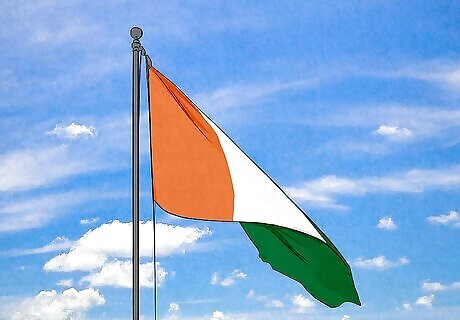
The Ivory Coast (Côte d’Ivoire ) tricolor looks like an inverted Irish flag. This tricolor features an orange stripe on the left (hoist side), white in the center, and green on the right—the opposite order of the Irish tricolor. In this case, orange symbolizes national growth and the savanna grasslands in the north of the country, white represents peace, purity, unity, and a pledge for success, and green symbolizes the coastal forests in the south of the country as well as hopes for a bright future. The flag has a proportion ratio of 2:3, meaning it’s 1.5 times longer than it is tall.
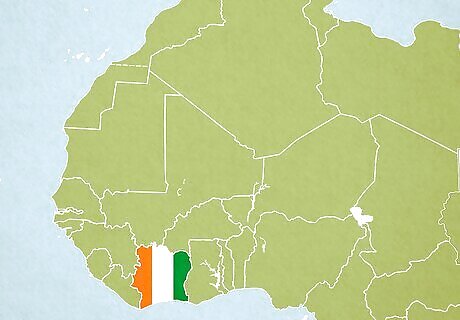
The Ivory Coast flag was officially adopted on December 3, 1959. Like Niger, the country chose to leave French rule and become autonomous in December 1958 and adopted its new flag a year later. The design remained the same after the country completed its transition to independence in August 1960. The first independent government was somewhat conservative and still tied to France, which is reflected in the similar tricolor design of the two countries’ flags. Like the Nigerien flag, the Ivory Coast flag doesn’t incorporate the pan-African color scheme of many of its neighbors.
The Flag of Cyprus
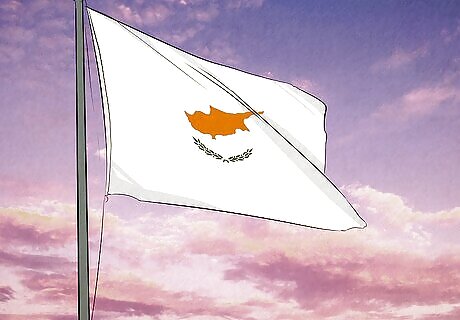
The flag of Cyprus has a unique design among green, white, and orange flags. The design features a copper-orange image of the country in the center of a white background with green olive branches underneath. The coppery-orange color represents the island’s abundant copper ore, from which it’s believed the country got its name. The white symbolizes peace and unity among the island’s inhabitants, while the green olive branches represent reconciliation between the Greek and Turkish Cypriot peoples. The proportion of the Cypriot flag is 2:3, meaning it’s 1.5 times longer than it is tall.
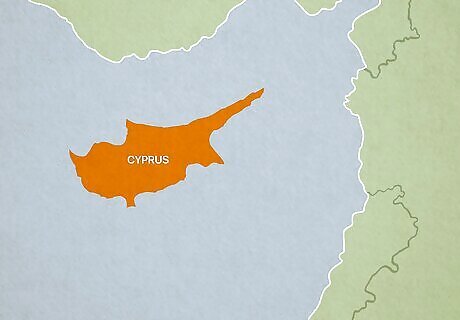
The flag of Cyprus was adopted on August 16, 1960. Cyprus had previously been part of the Ottoman Empire and flew Turkish flags before being taken by the British in 1878, after which it flew the Union Jack and other colonial flags. However, Greek and Turkish locals had no attachment to these British symbols and flew the Greek and Turkish national flags as their own. Though the official flag was adopted in 1960, it isn’t widely used. Divisions between Greek and Turkish communities on the island are deep, and many choose to continue flying the Greek or Turkish flag, depending on which nation they identify with more.
How are national flags designed?
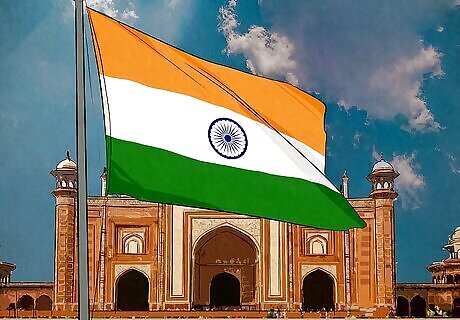
Flag designs seek to unite multicultural societies and tell a nation's story. Often, the colors, stripes, and other design elements represent specific places, events, religions, or cultural symbols that are important to a country. Take the US flag for example—the 13 red and white stripes represent the original 13 colonies (an important historical period for the country), and the 50 stars symbolize the current 50 states (a symbolic representation of America’s people). There’s no official consensus on what a national flag design must include, but general guidelines include: A bold but simple design that grabs attention. Few or no words. A maximum of 4 strong and contrasting colors. A look that’s distinctive from other flags without being too fashionable. Think you’re a national flag whiz? Take our “Can You Guess the Flags?” quiz to test your knowledge!














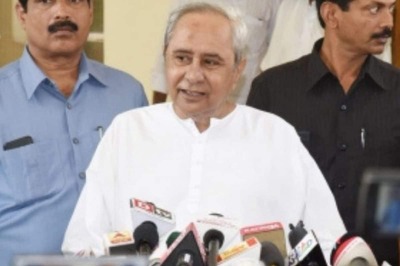




Comments
0 comment